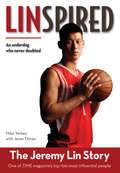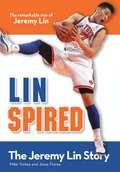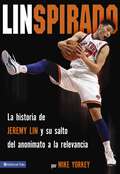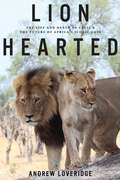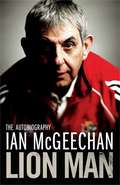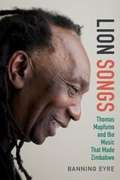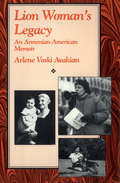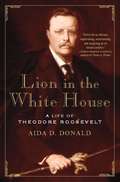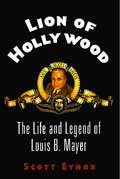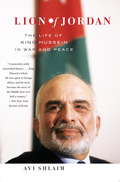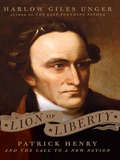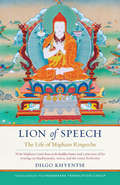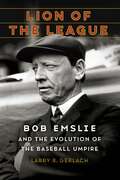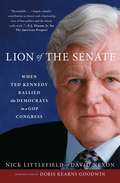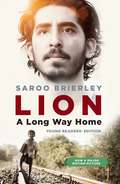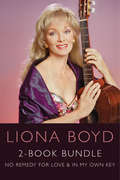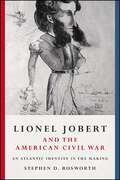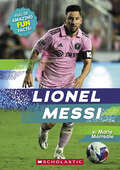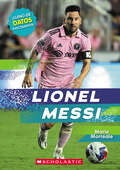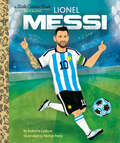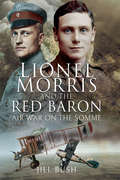- Table View
- List View
Linspired
by Mike Yorkey Jesse FloreaNo athletic scholarships, ignored by the NBA draft, waived by team after team, yet Jeremy Lin remained positive and never doubted God’s plan. Finally picked up by the New York Knicks, a teammate’s injury placed Lin on the court after weeks on the bench. Since then, Lin has captivated the sports world with his incredible basketball skills as a New York Knick and now a Houston Rocket. This is his remarkable story.
Linspired, Kids Edition: The Jeremy Lin Story
by Mike Yorkey Jesse FloreaLinspired reveals the inside story of the remarkable and meteoric rise of Jeremy Lin, superstar of the New York Knicks the first Asian-American-born player of Chinese/Taiwanese descent to play in the NBA. Discover the journey of the underdog who beat the odds to reach his current stardom and catch the attention of the sports world with both his incredible basketball skills and his on and off-court example of faith, persistence, and hard work. After receiving no athletic scholarship offers out of high school and not being drafted by an NBA team after graduating from Harvard, Lin signed a deal with his hometown team of the Golden State Warriors. After only his first year of play he was waived by the Warriors, but he was picked up by the Houston Rockets. Again, he was let go, on Christmas Eve, 2011. In spite of this disappointment, Lin always remained positive and trusted that God had a plan for his life and talents. Soon after, Lin was picked up when the New York Knicks needed a guard. After weeks of sitting on the bench, a teammate’s injury placed Lin on the court, and since then he has captivated sports fans throughout the world with his tremendous skill and humble response.
Linspired: The Remarkable Rise of Jeremy Lin
by Mike YorkeyLinspired reveals the remarkable journey of the ultimate underdog, Jeremy Lin, superstar of the New York Knicks and the first American-born player of Chinese/Taiwanese descent to play in the NBA. In spite of being cut by two NBA teams before he signed with the Knicks, Lin always trusted that God had a plan for his life and his talents: "I'm not exactly sure how it is all going to turn out, but I know for a fact that God has called me to be here now in the NBA," says Lin in Linspired. After weeks of sitting at the end of the bench, a teammate’s injury finally placed Lin on the court. Since then, he has captivated sports fans throughout the world with his tremendous skill and humble response to “Linsanity.” Weighing in on this phenomenon are tennis’s Michael Chang, the first notable Asian-American athlete, Lin’s pastor, Stephen Chen, and Pat Williams, senior vice president of the Orlando Magic. Other features include eight pages of full-color photos and in-depth interviews with Lin himself. Here is the remarkable inside story of the meteoric rise of Jeremy Lin.
Lion Hearted: The Life and Death of Cecil & the Future of Africa's Iconic Cats
by Andrew Loveridge“Until the lion has its own storyteller, tales of the lion hunt will always glorify the hunter.” —Zimbabwean proverbIn 2015, an American hunter named Walter Palmer shot and killed a lion named Cecil. The lion was one of dozens slain each year in Zimbabwe, which legally licenses the hunting of big cats. But Cecil’s death sparked unprecedented global outrage, igniting thousands of media reports about the peculiar circumstances surrounding this hunt. At the center of the controversy was Dr. Andrew Loveridge, the zoologist who had studied Cecil for eight years. In Lion Hearted, Loveridge pieces together, for the first time, the fascinating life and murky details of this beloved lion’s slaying. In the tradition of Born Free and Gorillas in the Mist, Lion Hearted chronicles Loveridge’s long acquaintance with a host of charismatic lions that his team has tracked, often from birth to death. Born and raised in Zimbabwe, Loveridge learned to love predators at the knee of his father, an eminent herpetologist who stored baby crocodiles in the family bathtub. After earning his doctorate at Oxford, he seized an invitation to study the lions of Zimbabwe’s Hwange National Park. There he meets Stumpy Tail, who, despite her name, has the dignity of the Queen of the Animal Kingdom; Dynamite, a venerable coalition leader who, muscled out by younger males, sets off on an incredible thirty-seven-day, 137-mile journey to find a new home; and Kataza, who escapes another lion’s claws, and whom Loveridge twice saves from death at the hands of humans. And, of course, there is Cecil. Dethroned in an epic battle, he forms an alliance with a former rival. He also becomes a favorite of photographers and tourists—until the fateful night when a Minnesota dentist and his hunting guide entice the trusting cat with a free meal. Loveridge unravels the complexities of lion society and the dangers the cats face both within their ranks and from the outside world. Despite their ruthless reputation, lions can form deep emotional bonds—females live in prides, a sisterhood of mothers, daughters, sisters, and aunts that can exhibit military precision when hunting in formation; males band together in coalitions to vie for control of territory and the female prides. They also display a wide range of emotional behavior, including mourning the loss of their mates, partners, and cubs. Africa’s lion population is estimated to have shrunk by 43 percent in the last twenty years. There may now be as few as 20,000 wild lions across the entire continent—far fewer than the number of elephants. While deploring the killing of lions for sport, Loveridge does not believe that banning trophy hunting, by itself, will halt the decline of Africa’s lion populations. He sees greater threats in human population growth, the loss of habitat to agriculture, and the illegal trade in lion body parts for use in traditional medicines. And he offers concrete proposals for averting the lion’s extinction. More than a gripping detective story, Lion Hearted is an exploration of humanity’s relationship with the natural world and an attempt to keep this majestic species from disappearing. “Lions are one of the most beloved animals on the planet,” Loveridge observes. “They are the national symbol of no fewer than fifteen countries. . . . Surely, we can think of a better way to save the wild animals we love besides killing them.”
Lion Lights: My Invention That Made Peace With Lions
by Richard Turere Shelly PollockNamed an Outstanding Science Trade Book for 2022 by the National Science Teaching Association and the Children’s Book Council. California Eureka Silver Honoree 2022 A story of ingenuity and perseverance. Richard Turere’s own story: Richard grew up in Kenya as a Maasai boy, herding his family’s cattle, which represented their wealth and livelihood. Richard’s challenge was to protect their cattle from the lions who prowled the night just outside the barrier of acacia branches that surrounded the farm’s boma, or stockade. Though not well-educated, 12-year-old Richard loved tinkering with electronics. Using salvaged components, spending $10, he surrounded the boma with blinking lights, and the system works; it keeps lions away. His invention, Lion Lights, is now used in Africa, Asia, and South America to protect farm animals from predators.
Lion Man
by Ian McgeechanIn an era when even the finest rugby coaches have a drastically short shelf-life, Ian McGeechan's longevity and adaptability is staggering. In his 20 years at the highest level of the game he has been at the centre of almost every major story in UK rugby and has worked alongside some of the greatest rugby figures of the era. McGeechan began his career as a player - winning more than thirty caps for Scotland and twice touring with the Lions. As coach to the Scottish national team, he led his country to a famous Grand Slam victory in the 1990 Five Nations tournament. Continued success in management earned him an appointment as head coach to the Lions on four separate occasions, more than any other, and he will again take charge on their 2009 tour to South Africa. Most recently, as coach of Wasps, McGeechan has guided the team to complete dominance in the club game. Now, in this frank and engaging memoir, Ian McGeechan shares his unrivalled insight into the triumphs and tribulations of British rugby and of the progress of the sport over the past two decades. Lion Man offers a unique glimpse into the past, present and future of British rugby from one of the most influential figures in the history of the sport.
Lion Songs: Thomas Mapfumo and the Music That Made Zimbabwe
by Banning EyreLike Fela Kuti and Bob Marley, singer, composer, and bandleader Thomas Mapfumo and his music came to represent his native country's anticolonial struggle and cultural identity. Mapfumo was born in 1945 in what was then the British colony of Rhodesia (now Zimbabwe). The trajectory of his career--from early performances of rock 'n' roll tunes to later creating a new genre based on traditional Zimbabwean music, including the sacred mbira, and African and Western pop--is a metaphor for Zimbabwe's evolution from colony to independent nation. Lion Songs is an authoritative biography of Mapfumo that narrates the life and career of this creative, complex, and iconic figure. Banning Eyre ties the arc of Mapfumo's career to the history of Zimbabwe. The genre Mapfumo created in the 1970s called chimurenga, or "struggle" music, challenged the Rhodesian government--which banned his music and jailed him--and became important to Zimbabwe achieving independence in 1980. In the 1980s and 1990s Mapfumo's international profile grew along with his opposition to Robert Mugabe's dictatorship. Mugabe had been a hero of the revolution, but Mapfumo's criticism of his regime led authorities and loyalists to turn on the singer with threats and intimidation. Beginning in 2000, Mapfumo and key band and family members left Zimbabwe. Many of them, including Mapfumo, now reside in Eugene, Oregon. A labor of love, Lion Songs is the product of a twenty-five-year friendship and professional relationship between Eyre and Mapfumo that demonstrates Mapfumo's musical and political importance to his nation, its freedom struggle, and its culture.
Lion Woman's Legacy: An Armenian-American Memoir (The\cross-cultural Memoir Ser.)
by Arlene Voski AvakianA &“vivid and engrossing&” narrative of one woman&’s journey from shame and internal conflict to becoming a liberated, confident, and proud lesbian (Kirkus Reviews). The descendant of survivors of the Armenian genocide, Arlene Avakian was raised in America where she could live free. But even with that freedom, she found herself a prisoner of both her family and society, denying her heritage along with her true sexuality. After marriage and motherhood, Arlene found herself exploring the growing women&’s lib movement of the 1970s, coming to embrace the strength of her grandmother—known as the Lion Woman—and realizing her full potential and personhood. Inspired by her passionate feminism and strengthened by a loving lesbian relationship, Avakian recollects and re-examines her personal history and the story of her courageous grandmother, revealing a legacy of radical politics, fierce independence, and a powerful affirmation of ethnic identity in this &“extremely readable and often painfully honest book&” (Library Journal).
Lion in the White House: A Life of Theodore Roosevelt
by Aida DonaldNew York State Assemblyman, Assistant Secretary of the Navy, Governor of New York, Vice President and, at forty-two, the youngest President ever--in his own words, Theodore Roosevelt "rose like a rocket. ” He was also a cowboy, a soldier, a historian, an intrepid explorer, and an unsurpassed environmentalist. In Lion in the White House, historian Aida Donald masterfully chronicles the life of this first modern president. TR’s accomplishments in office were immense. As President, Roosevelt redesigned the office of Chief Executive and the workings of the Republican Party to meet the challenges of the new industrial economy. Believing that the emerging aristocracy of wealth represented a genuine threat to democracy, TR broke trusts to curb the rapacity of big business. He built the Panama Canal and engaged the country in world affairs, putting a temporary end to American isolationism. And he won the Nobel Peace Prize--the only sitting president ever so honored. Throughout his public career, TR fought valiantly to steer the GOP back to its noblest ideals as embodied by Abraham Lincoln. Alas, his hopes for his party were quashed by the GOP’s strong rightward turn in the years after he left office. But his vision for America lives on. In lapidary prose, this concise biography recounts the courageous life of one of the greatest leaders our nation has ever known.
Lion of Hollywood: The Life and Legend of Louis B. Mayer
by Scott EymanLion of Hollywood is the definitive biography of Louis B. Mayer, the chief of Metro-Goldwyn-Mayer—MGM—the biggest and most successful film studio of Hollywood&’s Golden Age.An immigrant from tsarist Russia, Mayer began in the film business as an exhibitor but soon migrated to where the action and the power were—Hollywood. Through sheer force of energy and foresight, he turned his own modest studio into MGM, where he became the most powerful man in Hollywood, bending the film business to his will. He made great films, including the fabulous MGM musicals, and he made great stars: Garbo, Gable, Garland, and dozens of others. Through the enormously successful Andy Hardy series, Mayer purveyed family values to America. At the same time, he used his influence to place a federal judge on the bench, pay off local officials, cover up his stars&’ indiscretions and, on occasion, arrange marriages for gay stars. Mayer rose from his impoverished childhood to become at one time the highest-paid executive in America. Despite his power and money, Mayer suffered some significant losses. He had two daughters: Irene, who married David O. Selznick, and Edie, who married producer William Goetz. He would eventually fall out with Edie and divorce his wife, Margaret, ending his life alienated from most of his family. His chief assistant, Irving Thalberg, was his closest business partner, but they quarreled frequently, and Thalberg&’s early death left Mayer without his most trusted associate. As Mayer grew older, his politics became increasingly reactionary, and he found himself politically isolated within Hollywood&’s small conservative community. Lion of Hollywood is a three-dimensional biography of a figure often caricatured and vilified as the paragon of the studio system. Mayer could be arrogant and tyrannical, but under his leadership MGM made such unforgettable films as The Big Parade, Ninotchka, The Wizard of Oz, Meet Me in St. Louis, and An American in Paris. Film historian Scott Eyman interviewed more than 150 people and researched some previously unavailable archives to write this major new biography of a man who defined an industry and an era.
Lion of Jordan: The Life of King Hussein in War and Peace
by Avi ShlaimFor most of his long reign (1953-1999) Hussein of Jordan was one of the dominant figures in Middle Eastern politics, and one of the most consistent proponents of peace with Israel. This is the first major account of his life and reign, written with access to many of his surviving papers, with the co-operation (but not approval) of his family and staff, and extensive interviews with policy-makers of many different nationalities. Shlaim reveals that for the sake of dynastic and national survival, Hussein initiated a secret dialogue with Israel in 1963, and spent over 1000 hours in talks with Golda Meir, Shimon Peres, Itzhak Shamir, Itzhak Rabin, and countless other Israeli officials. Shlaim reconstructs this dialogue across the battle-lines from new Israeli records and first-hand accounts by many of the key participants, demonstrating that Israeli intransigence was largely responsible for the failure to achieve a peaceful settlement to the conflict between 1967 and 1994.
Lion of Liberty: Patrick Henry and the Call to a New Nation
by Harlow Giles UngerIn this action-packed history, award-winning author Harlow Giles Unger unfolds the epic story of Patrick Henry, who roused Americans to fight government tyranny—both British and American. Remembered largely for his cry for “liberty or death,” Henry was actually the first (and most colorful) of America’s Founding Fathers—first to call Americans to arms against Britain, first to demand a bill of rights, and first to fight the growth of big government after the Revolution. As quick with a rifle as he was with his tongue, Henry was America’s greatest orator and courtroom lawyer, who mixed histrionics and hilarity to provoke tears or laughter from judges and jurors alike. Henry’s passion for liberty (as well as his very large family), suggested to many Americans that he, not Washington, was the real father of his country. This biography is history at its best, telling a story both human and philosophical. As Unger points out, Henry’s words continue to echo across America and inspire millions to fight government intrusion in their daily lives.
Lion of Speech: The Life of Mipham Rinpoche
by Dilgo Khyentse Jamgon MiphamA traditional biography on the life of Mipham Rinpoche--one of the greatest 19th-century masters--from Dilgo Khyentse Rinpoche, one of the greatest 20th-century masters.The first half of this volume comprises the first-ever English translation of the biography of Mipham Rinpoche written by Dilgo Khyentse Rinpoche, a teacher to His Holiness the Dalai Lama as well as an entire generation of other teachers and students throughout the Himalayan region and the West. Composed in 1939, it was left behind in Tibet in 1959 when Khyentse Rinpoche went into exile and was lost for fifty-one years before its discovery in 2010 by an extraordinary stroke of good luck. Reverential in tone, it is informed by both oral accounts preserved in notes kept by Khyentse Rinpoche's elder brother and the recollections of Mipham's devoted personal attendant of thirty-seven years.In keeping with the identification of Mipham as an emanation of Manjushri, the lion of speech, the second half comprises a selection of Mipham's writings, designed to give the reader an experience of Mipham's eloquent speech and incisive thought. It includes both a new translation of The Lion's Roar: A Comprehensive Discourse on the Buddha-Nature and A Lamp to Dispel the Dark, a teaching of the Great Perfection, as well as excerpts from previously published translations of his works on Madhyamaka and tantra.
Lion of the League: Bob Emslie and the Evolution of the Baseball Umpire
by Larry R. GerlachRobert Dean Emslie (1859–1943) spent fifty-six of his eighty-four years in professional baseball—eight as a player and forty-nine as an umpire. When arm problems ended his career as a Major League pitcher, he turned to umpiring, serving in that capacity for thirty-five seasons, then as an umpire supervisor for thirteen years. His longevity is all the more remarkable considering he toiled during the three most contentious and difficult decades umpires ever faced: the years from 1890 to 1920, when baseball transitioned from amateur to professional sport and from regional business to commercial entertainment industry. Emslie endured the rough-and-tumble umpire-baiting 1890s, the Deadball era, injuries from thrown and batted balls, physical and verbal assaults from players and fans, and criticism in the press. Among his most notable games, he called four no-hitters and worked as the base umpire in the famous Merkle&’s Boner game between the New York Giants and the Chicago Cubs at the Polo Grounds in 1908. He often clashed with Giants manager John McGraw, who nicknamed him &“Blind Bob.&” Yet he was widely praised by players and his peers. Honus Wagner, the great Pittsburgh shortstop, ranked Emslie the best National League umpire he had seen during his twenty-year career. Umpires Bill McGowan and Billy Evans respectively regarded him as &“the greatest base umpire of all time&” and &“one of the greatest umpires the game ever produced.&” Emslie was also the acknowledged master of baseball&’s rules such that National League presidents regularly consulted with him on controversial calls and protests. Emslie accepted a position as the chief of National League umpires, serving as an adviser to the National League president.Lion of the League is the biography of an umpire whose career spanned the formative years of modern baseball.
Lion of the Senate
by David Nexon Nick Littlefield"The best book I have read about the inner dynamics of the United States Senate." --Doris Kearns GoodwinTwo top domestic policy advisors to Senator Edward Kennedy offer an insider's view of several remarkable years when Kennedy fought to preserve the Democratic mission against Newt Gingrich's Contract with America and a Republican majority in both houses--a story that has special resonance now as a resurgent Republican right once again controls Congress. In November 1994 the election swept a new breed of Republicans into control of the United States Congress. Led by Speaker Newt Gingrich, the Republicans were determined to enact a conservative agenda that would reshape American government. Had it not been for Ted Kennedy, they would have succeeded. In 1994, after defending his Senate seat against challenger Mitt Romney, Kennedy came back to Washington to find Democrats, including President Clinton, demoralized and leaning toward "compromises" that would adopt much of the Republican agenda. Undaunted, Kennedy pressed the agenda he would have championed had his party held power. He rallied the Democrats. He reached across the aisle to craft and pass key progressive legislation. And he stopped the Gingrich revolution in its tracks. Nick Littlefield and David Nexon tell this story of a bare-knuckled and sometimes hilarious fight in the United States Senate. It is a political lesson for all time.
Lion: A Long Way Home Young Readers' Edition
by Saroo BrierleyThe young readers' edition of the true story that inspired Lion, the Academy Award nominated film starring Dev Patel, David Wenham, Rooney Mara, and Nicole Kidman. When Saroo Brierley used Google Earth to find his long-lost home town half a world away, he made global headlines. Saroo had become lost on a train in India at the age of five. Not knowing the name of his family or where he was from, he survived for weeks on the streets of Kolkata before being taken into an orphanage and adopted by a couple in Australia. Despite being happy in his new family, Saroo always wondered about his origins. When he was a young man the advent of Google Earth led him to pore over satellite images of India for landmarks he recognized. And one day, after years of searching, he miraculously found what he was looking for and set off on a journey to find his mother.This edition features new material from Saroo about his childhood, including a new foreword and a Q&A about his experiences and the process of making the film."The emotional journey of Saroo Brierley (Patel) . . . will melt hearts around the globe."—People magazine"Amazing stuff."—The New York Post
Liona Boyd 2-Book Bundle: No Remedy for Love / In My Own Key
by Liona BoydExotic venues, sold-out concerts, and the companionship of the world’s most powerful people have given classical guitarist Liona Boyd a lifestyle that, like her music, is one in a million. Both of Liona Boyd’s personal, intimate memoirs are bundled together in this special 2-book collection. Includes: In My Own Key From down-and-out years in Paris, to her affair with Canada’s prime minister Pierre Trudeau, to stages around the world, Liona Boyd has made a lifestyle of crossing boundaries, both musically and romantically. Whether with classical greats or folk legends like Gordon Lightfoot, she has always made music — and lived her life — in her own key. No Remedy for Love A fascinating, personal story of the adventures, romance, and recovery of renowned classical guitarist Liona Boyd. After her divorce and departure from Beverly Hills, Boyd reinvented her career, became a singer-songwriter and the pen pal of Prince Philip, and turned a devastating diagnosis into a new chapter in her life and career.
Lionel Jobert and the American Civil War: An Atlantic Identity in the Making
by Stephen D. BosworthMillions of soldiers and civilians passionately supported one side or the other in the American Civil War. For Colonel Lionel Jobert d'Epineuil of the Fifty-Third New York Volunteer Regiment, however, his own advancement mattered more than the outcome of the conflict. This biography analyzes the remarkable exploits of a man driven by ambition—and unhindered by scruples—to attain position and prestige in the Atlantic region during the second half of the nineteenth century.Lionel Jobert (1829–1881) was born in France, but is described as having an Atlantic identity. A ship captain by trade, Jobert exploited unstable governmental conditions in Haiti and the United States to pursue his private interests. Drawing on previously unused sources, Stephen D. Bosworth allows us to view the Civil War from the perspective of a foreign participant whose life constitutes one colorful tile in the vast mosaic that makes up the history of the nineteenth-century Atlantic.
Lionel Messi (Real Bios)
by Marie MorrealeDiscover how Lionel Messi became an international superstar in this updated edition!Revised and updated! As the biggest star in the world's most popular sport, Lionel "Leo" Messi is an international celebrity. But in many ways, he's just a regular guy.Readers will learn about Leo's favorite foods and pastimes and find out how he likes to spend time with his family. They will also learn how he got his start as a soccer player and how he became an international superstar. With up-to-date information, including his move to America to play for Inter Miami in July 2023, this revised edition is a must-have for all Messi fans!
Lionel Messi (Real Bios)
by Marie MorrealeDiscover how Lionel Messi became an international superstar in this updated edition!¡Descubre cómo Lionel Messi se convirtió en una superestrella internacional del fútbol en esta edición actualizada!Revised and updated! As the biggest star in the world's most popular sport, Lionel "Leo" Messi is an international celebrity. But in many ways, he's just a regular guy.Readers will learn about Leo's favorite foods and pastimes and find out how he likes to spend time with his family. They will also learn how he got his start as a soccer player and how he became an international superstar. With up-to-date information, including his move to America to play for Inter Miami in July 2023, this revised edition is a must-have for all Messi fans!¡Revisado y actualizado! El mejor jugador del deporte más popular del mundo, Lionel "Leo" Messi es una celebridad internacional. Pero en muchos sentidos, es sólo un tipo normal.Con este libro, los lectores descubrirán cuáles son las comidas y pasatiempos favoritos de Leo y cómo le gusta estar con su familia. También aprenderán sobre sus inicios como jugador de fútbol y cómo se convirtió en una superestrella internacional. Con información actualizada, incluyendo su traslado a los Estados Unidos para jugar con el Inter Miami en julio de 2023, ¡esta edición revisada es imprescindible para todos los fans de Messi!
Lionel Messi (Superstars of Soccer SPANISH)
by Carlos SosaLionel Messi es, a pesar de su juventud, uno de los más grandes jugadores en la historia del fútbol. Su lista de títulos y trofeos es interminable. Sin embargo, este muchacho que hoy recibe elogios en varios idiomas debió atravesar momentos muy difíciles para llegar a la cima. La vida de Lionel Messi habla de talento, sacrificio,amor, dolor y esperanza. Es una historia donde una decisión cambiaría un destino. Donde las ganas de jugar llegaron donde una familia desesperada y dispuesta a todo, nunca imaginó llegar. Y donde un niño con una humildad y talento excepcionales, pudo decirle al mundo que nada es imposible.
Lionel Messi (Superstars of Soccer)
by Carlos SosaLionel Messi es, a pesar de su juventud, uno de los más grandes jugadores en la historia del fútbol. Su lista de títulos y trofeos es interminable. Sin embargo, este muchacho que hoy recibe elogios en varios idiomas debió atravesar momentos muy difíciles para llegar a la cima. La vida de Lionel Messi habla de talento, sacrificio,amor, dolor y esperanza. Es una historia donde una decisión cambiaría un destino. Donde las ganas de jugar llegaron donde una familia desesperada y dispuesta a todo, nunca imaginó llegar. Y donde un niño con una humildad y talento excepcionales, pudo decirle al mundo que nada es imposible.
Lionel Messi: A Little Golden Book Biography (Little Golden Book)
by Roberta LudlowHelp your little one dream big with a Little Golden Book biography about Argentine professional footballer Lionel Messi! Little Golden Book biographies are the perfect introduction to nonfiction for young readers—as well as fans of all ages!Lionel Messi is widely regarded as one of the greatest soccer players of all time! This Little Golden Book Biography about the record-smashing star forward for Argentina, FC Barcelona, Paris Saint-Germain, and Inter Miami is an inspiring read-aloud for young readers.Look for more Little Golden Book biographies:Simone BilesJackie RobinsonMisty Copeland
Lionel Messi: All Access
by ScholasticIt's time to take it to the field! Do you know all there is to know about Lionel Messi, one of the best soccer players of all time? This unauthorized biography has everything you need in order to become a true super fan!Get to know Lionel Messi in the biography that is full of awesome facts, stats, trivia, and more! From his start in youth leagues at just 13 years old to becoming a World Cup Champion, you'll be able to see Messi's all-star journey.Looking to up your soccer game? Learn from the best by getting a full rundown on how Messi trains! Drills and excersise tips will help you get a leg up on the competition.Whether you want to become a Messi mega fan or learn what it takes to become a soccer super star, Lionel Messi: All Access has got it all!
Lionel Morris and the Red Baron: Air War on the Somme
by Jill BushA biography of the young, London-born, World War I pilot who was the first to be shot down by the legendary Red Baron. Nineteen-year-old Lionel Morris left the infantry for the wood and wires of the Royal Flying Corps on the Western Front in 1916, joining one of the world&’s first fighter units alongside the great ace Albert Ball. Learning on the job, in dangerously unpredictable machines, Morris came of age as a combat pilot on the first day of the Battle of the Somme, as the R.F.C. was winning a bloody struggle for admiralty of the air. As summer faded to autumn and the skies over Bapaume filled with increasing numbers of enemy aircraft, the tide turned. On 17 September 1916, Morris&’s squadron was attacked by a lethally efficient German unit, including an unknown pilot called Manfred von Richthofen. As the shock waves spread from the empty hangars of No.11 Squadron all the way to the very top of the British Army, the circumstances surrounding Morris&’s death marked a pivotal shift in the aerial war, and the birth of its greatest legend. Told through previously unpublished archive material, the words of contemporaries, and official records, Lionel Morris and the Red Baron traces a short but extraordinary life and reveals how Morris&’s role in history was rediscovered one hundred years after his death. Praise for Lionel Morris and the Red Baron &“The best written World War I aviation history account this reviewer has read in some time . . . has earned the highest recommendation.&” —Over the Front &“This is a book that deserves to be read.&” —The Aviation Historian
